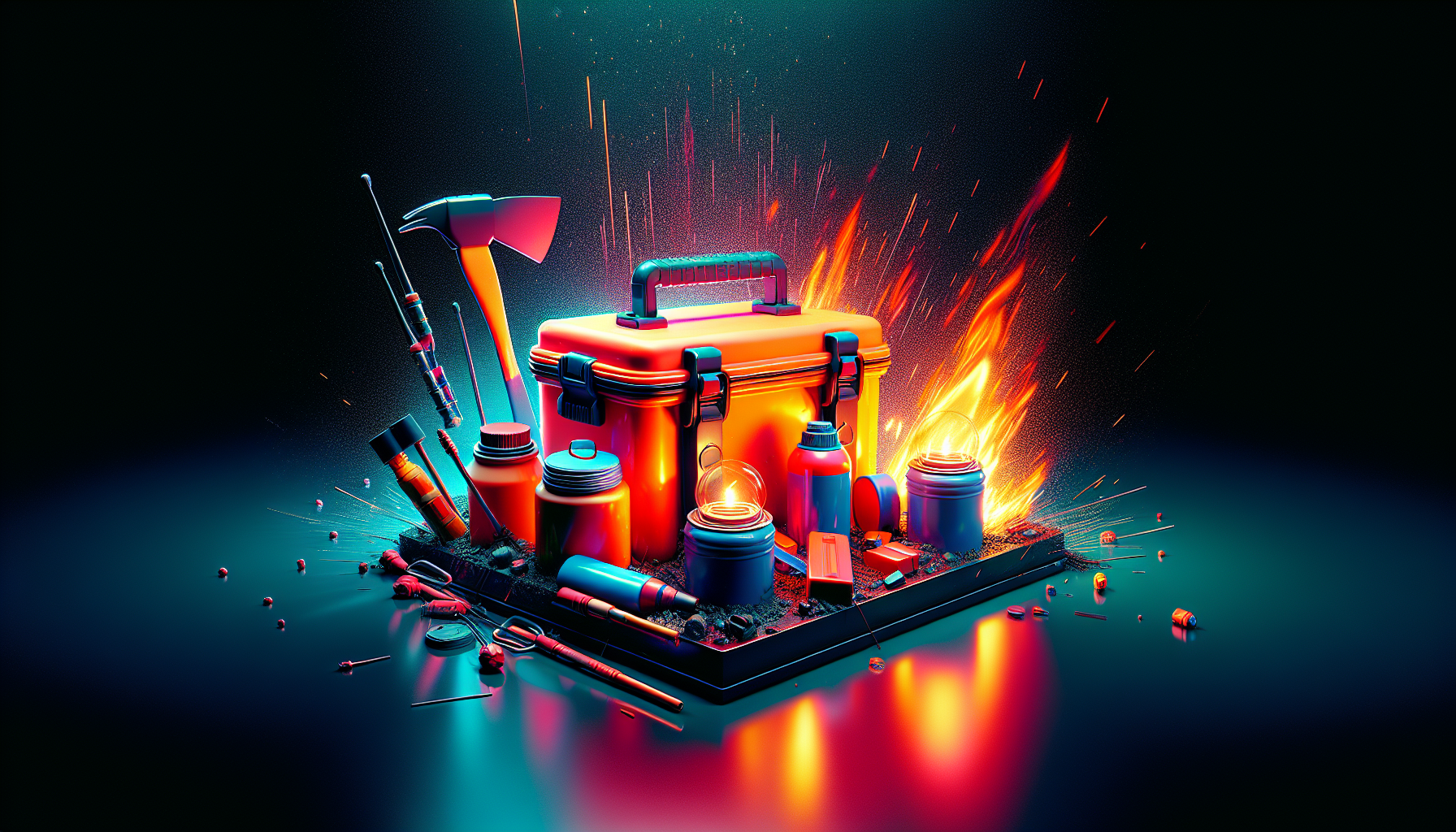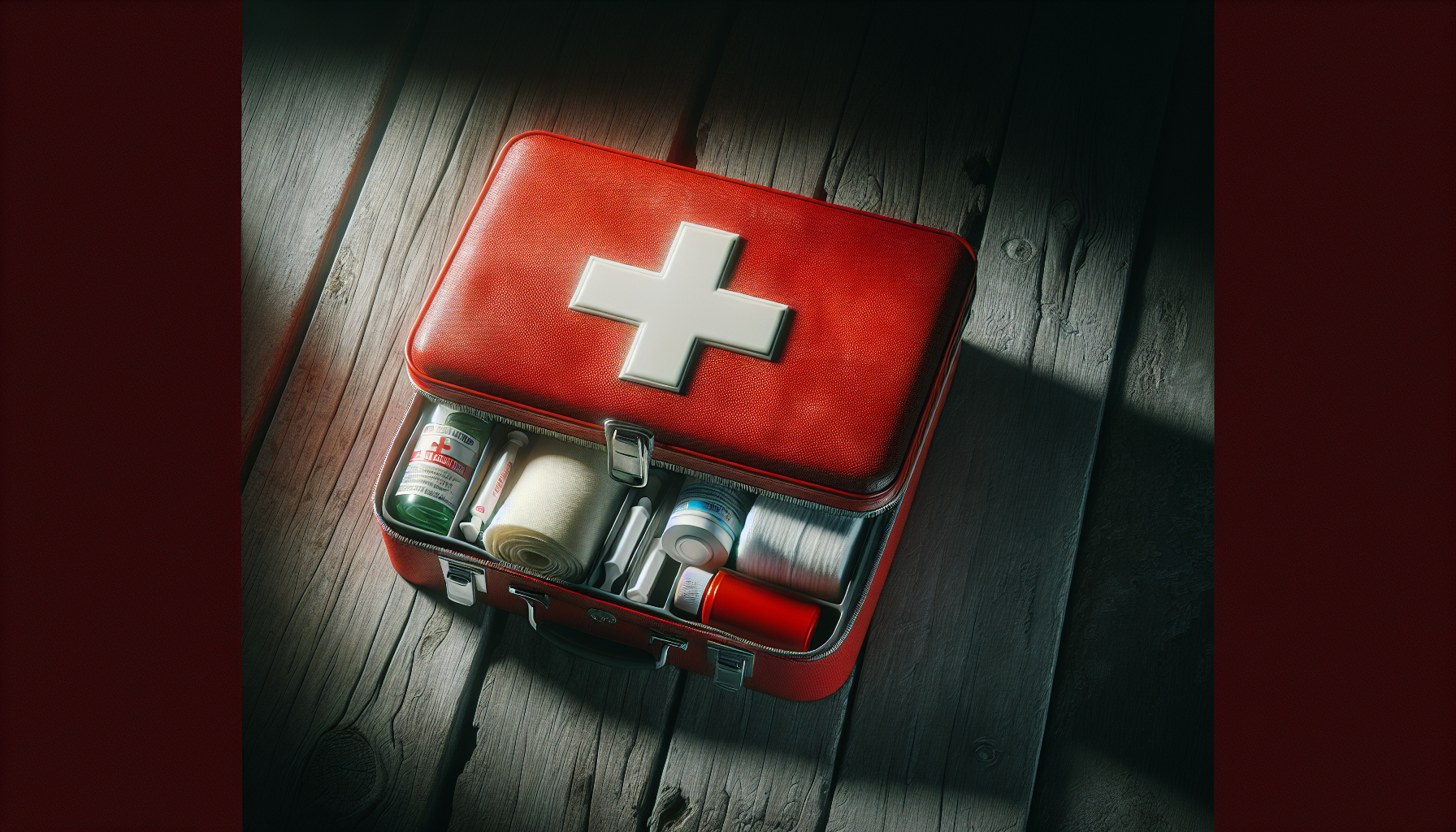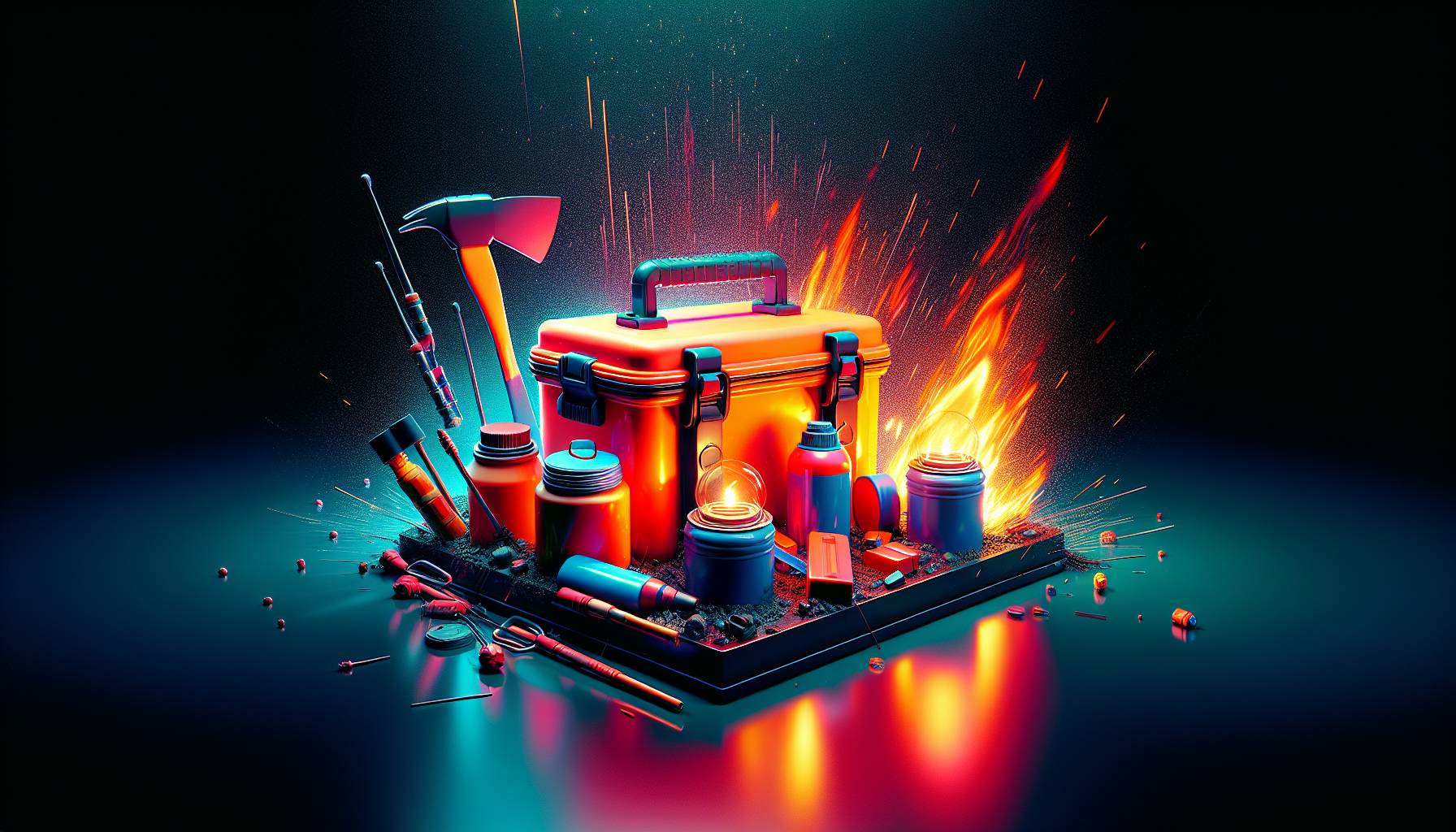In times of uncertainty, it’s only natural to wonder what essentials you should have on hand to weather any potential disaster. Whether it’s a natural calamity or a global crisis, being prepared is key. So, what should you stock up on for a disaster? Let’s explore a few crucial items that will ensure your safety, comfort, and peace of mind during challenging times.

Food and Water
Canned Foods
When preparing for a disaster, one of the essential items to stock up on is canned foods. Canned foods are a great option as they have a long shelf life and can provide you with the necessary nutrition during an emergency. It’s a good idea to have a variety of canned foods in your pantry, including vegetables, fruits, meats, and soups. Make sure to check the expiration dates regularly and rotate your stock to ensure freshness.
Dry Foods
In addition to canned foods, it’s also important to have a supply of dry foods. Dry foods, such as pasta, rice, beans, and cereal, can provide you with essential carbohydrates and proteins that are needed for energy and sustenance. Keep them stored in airtight containers to maintain their freshness and prevent pests from getting to them. Don’t forget to include a manual can opener in your emergency kit to ensure you can access your canned and dry food supply.
Bottled Water
Water is the most crucial item to have in your emergency supplies. It’s essential to have enough water to sustain yourself and your loved ones for at least three days. Bottled water is a convenient option as it is already purified and does not require additional treatment. Ensure you have an adequate supply of bottled water, typically one gallon per person per day. Remember to regularly check the expiration dates and replace any expired bottles.
Water Purification Tablets
In situations where bottled water is not available, having water purification tablets can be a lifesaver. These tablets effectively kill bacteria and viruses, making water safe to drink. They are compact, lightweight, and easy to carry, making them a valuable addition to your emergency kit. However, it is crucial to follow the instructions provided with the tablets to ensure proper usage and effectiveness.
Non-perishable Foods
Non-perishable foods are an excellent addition to your emergency supplies. These are foods that do not require refrigeration and have a long shelf life. Examples of non-perishable foods include peanut butter, crackers, granola bars, and canned nuts. These foods can provide you with essential nutrients and keep hunger at bay during a disaster.
First Aid Supplies
Bandages and Dressings
First aid supplies are crucial in the event of an emergency. Your kit should include an assortment of bandages and dressings to treat wounds and injuries effectively. Stock up on adhesive bandages of different sizes, sterile gauze pads, adhesive tape, and compression bandages. Make sure the dressings are sterile and in sealed packaging to maintain their effectiveness.
Antiseptics and Disinfectants
To prevent infections, it’s essential to have a supply of antiseptics and disinfectants in your first aid kit. This includes items such as hydrogen peroxide, rubbing alcohol, and antiseptic wipes. These can be used to clean wounds and surfaces, reducing the risk of infection during a disaster. Remember to replace these items regularly as they may have expiration dates.
Medications
If you take prescription medications, it’s crucial to have a sufficient supply on hand during a disaster. Make sure to check the expiration dates regularly and refill your prescriptions in a timely manner. Additionally, consider including over-the-counter medications such as pain relievers, fever reducers, and antihistamines in your first aid kit. These medications can help alleviate symptoms and provide relief during an emergency.
Medical Tools and Equipment
Having essential medical tools and equipment can make a significant difference in providing proper care during a disaster. Your first aid kit should include items such as thermometers, scissors, tweezers, disposable gloves, and a CPR mask. These tools can help you assess and treat injuries effectively, ensuring the best possible care for yourself and others.
Emergency Shelter
Tents
In the event of a disaster that requires evacuation or displacement, having a reliable shelter is crucial. A sturdy and easy-to-assemble tent can provide you with a safe and secure place to stay. Look for tents that are waterproof and can withstand harsh weather conditions. Consider the size of your family when selecting a tent, and opt for one that provides enough space for everyone to sleep comfortably.
Sleeping Bags
To stay warm and comfortable during an emergency, sleeping bags are a must-have item in your emergency supplies. Make sure to choose sleeping bags that are suitable for the climate in which you live. Look for features such as insulation, water resistance, and compactness for easy storage and transport.
Blankets
Having extra blankets in your emergency kit is essential for additional warmth and comfort. Opt for blankets that are made of insulating materials and are lightweight and compact. These can be used in conjunction with sleeping bags or as standalone coverings. Remember to have enough blankets for each person in your family.
Tarps
Tarps are versatile and can serve multiple purposes during a disaster. They can be used as temporary shelter, ground cover, or even as a waterproof barrier to protect your belongings. Look for tarps that are durable and have reinforced grommets for easy attachment and setup.
Emergency Blankets
Emergency blankets, also known as space blankets, are lightweight, compact, and provide excellent thermal insulation. These metallic blankets can reflect body heat back to the individual, helping to prevent hypothermia in cold conditions. They are an essential addition to your emergency supplies, as they can provide crucial warmth and protection during a disaster.
Lighting and Communication
Flashlights
In the event of a power outage, having a reliable source of light is vital. Flashlights are an essential item to have in your emergency kit. Opt for LED flashlights as they are energy-efficient and have a longer battery life. Make sure to have spare batteries on hand and regularly check that the flashlight is in proper working condition.
Batteries
Stocking up on batteries that are compatible with your electronic devices is crucial during a disaster. Keep a variety of batteries in different sizes to ensure you can power your flashlights, portable radios, and other essential devices. Remember to check the expiration dates on your batteries regularly and replace them as needed.
Portable Radios
During a disaster, it’s important to have access to information and updates. A portable radio can provide you with important news, weather updates, and emergency alerts. Look for a radio that is battery-powered or hand-cranked, so you don’t have to rely on electricity. Ensure that the radio has multiple frequency options so you can tune in to various stations.
Whistle
A whistle is a simple but effective tool for signaling for help during an emergency. It can be used to attract attention if you are in distress or need assistance. Make sure to keep a durable whistle in your emergency kit and familiarize yourself with how to use it properly. Distribute whistles to each member of your family, so everyone has a means of communication in case of separation.
Signal Mirror
A signal mirror is a small, lightweight tool that can be invaluable for signaling for help over long distances. It is designed to reflect sunlight and create a visible signal. In a disaster situation, when other communication methods may not be available, a signal mirror can help draw attention to your location and increase the chances of being rescued. Keep a signal mirror in your emergency kit and learn how to use it effectively.

Hygiene and Sanitation
Hand Sanitizer
Maintaining proper hygiene and sanitation is essential during a disaster to prevent the spread of germs and diseases. Hand sanitizer is a convenient option for keeping your hands clean when soap and water are not readily available. Choose a hand sanitizer with at least 60% alcohol content for maximum effectiveness. Make sure to have multiple bottles available for use.
Toilet Paper
Toilet paper is a basic necessity that should not be overlooked when preparing for a disaster. Ensure you have an ample supply of toilet paper stored in a dry and secure location. Consider including individually wrapped toilet paper rolls for easy storage and distribution when needed.
Wet Wipes
Wet wipes are an excellent addition to your emergency supplies for maintaining personal hygiene. They can be used for cleaning your hands, face, and body when bathing facilities are not accessible. Opt for unscented and biodegradable wet wipes to minimize any potential allergies or environmental impact.
Trash Bags
Having an adequate supply of sturdy trash bags is essential for maintaining cleanliness and proper waste management during a disaster. They can be used to dispose of trash, store soiled items, or even create an improvised waterproof barrier. Choose trash bags that are durable and tear-resistant for added convenience.
Feminine Hygiene Products
For individuals who menstruate, it’s crucial to have an ample supply of feminine hygiene products in your emergency kit. Include items such as sanitary pads and tampons to ensure personal comfort and hygiene. Consider storing these items in waterproof bags to protect them from moisture and contamination.
Tools and Equipment
Multitool
A multitool is a versatile and compact tool that combines various functions into one device. It typically includes pliers, a knife, screwdrivers, and other useful tools. Having a multitool in your emergency kit can be invaluable for repairs, opening cans, or performing various tasks. Choose a durable multitool with a range of functions to suit your needs.
Duct Tape
Duct tape is a versatile tool that can be used for a wide range of purposes during a disaster. It can be used for temporary repairs, creating makeshift shelters, sealing containers, or even securing bandages. Keep a roll of duct tape in your emergency kit as it can be incredibly useful in various situations.
Utility Knife
A utility knife is a sharp and versatile tool that can be used for various tasks during a disaster. It can be used for cutting materials, opening packages, or even self-defense if necessary. Choose a utility knife that is sturdy, easy to handle, and has a retractable blade for safety.
Rope
Rope is a versatile item that has countless uses in emergency situations. It can be used for securing tarps or tents, creating makeshift clotheslines, or even constructing emergency shelters. Opt for a sturdy and durable rope that can withstand heavy loads and adverse weather conditions.
Generator
In situations where power outages are expected to last for an extended period, having a generator can be a lifesaver. A generator can provide you with the necessary power to keep essential appliances and devices running, such as refrigerators, medical equipment, or communication devices. Choose a generator that is suitable for your specific power needs and ensure you have enough fuel to sustain it for an extended period.
Emergency Cash
Small Bills
In a disaster situation where electronic payment systems may be unavailable, having an emergency cash stash is essential. It’s recommended to have a supply of small bills, such as one-dollar bills, five-dollar bills, and ten-dollar bills. This allows you to make smaller purchases or provide exact change if needed.
Coins
In addition to small bills, it’s also a good idea to have a supply of coins. Coins can be useful for vending machines, payphones, or any other device that may require exact change. Keep a variety of coins, including quarters, dimes, nickels, and pennies, in your emergency cash stash.
ATM Cards
While cash is essential, having access to additional funds is also crucial during a disaster. Ensure you have your ATM cards readily available and consider withdrawing cash in advance if possible. Keep in mind that ATMs may be inaccessible or out of service during emergencies, so it’s important to plan ahead.
Emergency Savings
Having emergency savings is a wise financial practice that can provide a safety net during challenging times. It’s recommended to have a dedicated emergency fund that can cover at least three to six months of living expenses. This can help you navigate through a disaster more comfortably and provide you with the means to meet essential needs.
Important Documents
ID Cards
Having identification cards readily available during a disaster is vital for various reasons. Identification cards can help prove your identity, access vital services, or provide important information to emergency responders. Make sure to have copies of identification cards for each member of your family, including driver’s licenses, passports, and social security cards.
Passports
Passports are essential documents that can be useful during a disaster, especially if evacuation or international travel becomes necessary. Ensure that your passports are up to date and easily accessible. Consider making copies of your passports and storing them in a separate location for additional security.
Insurance Papers
Having access to insurance papers during a disaster can help expedite the recovery process and ensure proper coverage. Keep copies of your insurance policies, including homeowners, renters, and auto insurance, in a safe and easily accessible place. It’s also a good idea to have contact information for your insurance providers readily available.
Will and Trust
While it may not be pleasant to think about, having a will and trust in place is crucial for ensuring your wishes are honored in the event of a disaster. These legal documents outline how your assets should be distributed and provide instructions for the care of minor children or dependents. Keep copies of your will and trust in a secure location and inform a trusted family member or friend of their whereabouts.
Emergency Contact List
Maintaining an emergency contact list is essential for quick and efficient communication during a disaster. Include the contact information of family members, friends, neighbors, healthcare providers, and other individuals who may be relevant during an emergency. Keep a physical copy of the emergency contact list in your emergency kit and save a digital copy on your electronic devices for easy access.
Clothing and Personal Items
Warm Clothing
Having warm clothing readily available during a disaster is crucial for maintaining comfort and avoiding hypothermia in colder climates. Stock up on extra layers, including jackets, sweaters, hats, gloves, and thermal underwear. Consider including waterproof and windproof options to protect yourself from the elements.
Rain Gear
Rain gear, including waterproof jackets, pants, and boots, is essential for staying dry during wet conditions. Keeping your clothing dry can help prevent hypothermia and maintain overall comfort. Make sure to choose rain gear that is lightweight, durable, and easily packed for mobility.
Extra Underwear and Socks
Having extra underwear and socks in your emergency supplies is often overlooked but essential for personal hygiene and comfort. Include several sets of clean underwear and socks per person to ensure you can maintain cleanliness and comfort throughout a disaster situation.
Extra Prescription Medications
If you or your family members rely on prescription medications, it’s crucial to have an adequate supply on hand during a disaster. Speak with your healthcare provider about obtaining additional prescription medications to have in your emergency supplies. Make sure to rotate your supply regularly to ensure medications do not expire.
Personal Hygiene Items
Personal hygiene items, such as toothbrushes, toothpaste, soap, and shampoo, should not be overlooked when stocking up for a disaster. Maintaining personal hygiene can help prevent the spread of germs and maintain a sense of normalcy during challenging times. Include travel-sized options that are easier to pack and store in your emergency kit.
Miscellaneous Supplies
Duct Tape
Duct tape is a versatile item that can come in handy in a wide range of situations during a disaster. It can be used for temporary repairs, sealing containers, or even creating makeshift tools. Having an extra roll of duct tape in your emergency kit ensures you have this valuable tool readily available when needed.
Bungee Cords
Bungee cords are flexible, stretchable cords with hooks on each end. They can be used to secure items, create makeshift shelters, or even for first aid purposes. Having a few bungee cords in your emergency kit provides you with a versatile tool for various applications.
Batteries
Batteries are essential for powering various devices and tools during a disaster. It’s always a good idea to have extra batteries on hand in different sizes to ensure you can power your flashlights, radios, or any other battery-operated device. Check the expiration dates regularly and replace them as needed.
Ziplock Bags
Ziplock bags are a versatile item that can help keep your belongings organized and protected during a disaster. They are ideal for storing smaller items, such as matches, batteries, or important documents, in a waterproof and easily accessible manner. Consider having a variety of sizes available for different purposes.
Cash
In addition to an emergency cash stash, it’s a good idea to have some loose cash on hand when preparing for a disaster. While electronic payment systems may be unavailable, having smaller bills and loose change can allow for flexibility and ease of transaction if cash is the only accepted form of payment.
Stocking up on essential supplies for a disaster is an important step in ensuring the safety and well-being of yourself and your loved ones. By having a comprehensive emergency kit that includes food, water, first aid supplies, shelter, lighting and communication tools, hygiene and sanitation items, tools and equipment, emergency cash, important documents, clothing, and miscellaneous supplies, you can be better equipped to face unexpected situations with confidence and resilience. Remember to regularly check and rotate your supplies to ensure their freshness and effectiveness. Stay prepared, stay safe!
